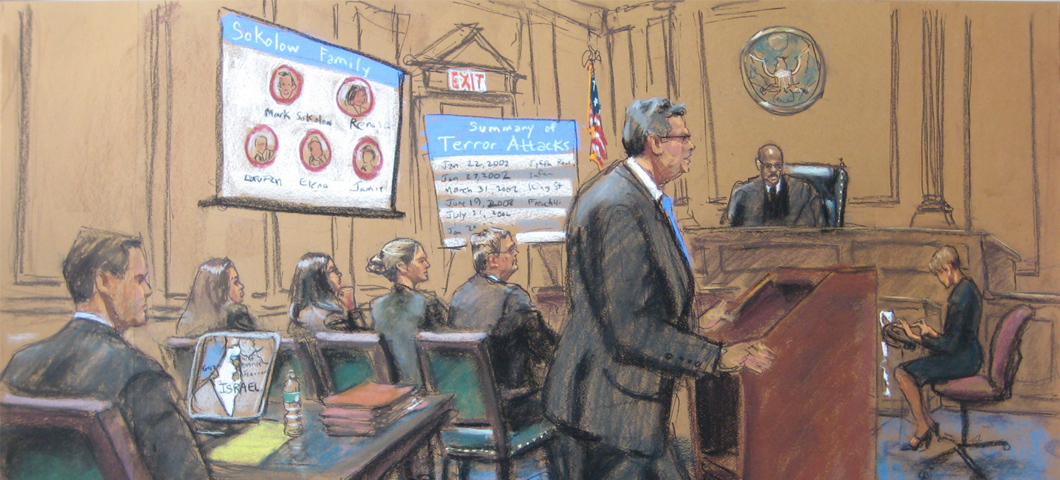How Trial Presentations Help Attorneys Effectively Convey Legal Arguments
How Trial Presentations Help Attorneys Effectively Convey Legal Arguments
Blog Article
The Power of Visuals in Test Presentations for a Winning Debate
The assimilation of visuals in test discussions has actually emerged as a vital factor in effectively communicating complicated debates to jurors. By utilizing numerous types of visual help-- be it diagrams, photographs, or computer animations-- lawyers can boost understanding and retention, ultimately shaping the court's understanding of the instance.
Relevance of Visuals in Tests
In numerous legal settings, visuals play a crucial function in boosting the efficiency of test discussions. The assimilation of aesthetic aspects can considerably affect jurors' understanding and retention of complex information, consequently shaping their assumptions and decisions. Visuals, such as graphes, layouts, and pictures, can simplify intricate stories, making them extra easily accessible and engaging.
In addition, the human brain procedures visual details much more successfully than message, which underscores the relevance of integrating visuals right into legal debates. By equating dense legal concepts into visual styles, attorneys can assist in clearer communication, ensuring that bottom lines are not neglected throughout trials.
Furthermore, visuals offer to involve jurors on a psychological level, promoting a connection to the situation that words alone may fail to accomplish. The calculated use visuals can evoke compassion, motivating jurors to consider the human elements of the instance.
Inevitably, the significance of visuals in tests lies in their capacity to enhance clearness, boost juror interaction, and strengthen the narrative being provided. This potent combination is important for crafting influential debates that resonate with jurors and influence the outcome of lawful process.
Kinds Of Visuals to Utilize
Reliable trial presentations can substantially take advantage of a selection of visual devices that deal with different aspects of the situation. trial presentations. Making use of layouts and charts can successfully break down complex information, making it extra digestible for jurors. Flowcharts can illustrate the series of events, while bar charts may succinctly compare appropriate data factors.

Animations and simulations can likewise play an essential function, particularly in cases including technical data or detailed situations. These visuals can dynamically represent processes or activities, providing clearness and engagement that static images might not achieve.
In addition, infographics integrate message and visuals to summarize crucial info properly. They can present timelines, statistics, and considerable instance factors in a visually appealing manner, making it easier for jurors to comply with the disagreement.
Enhancing Understanding and Retention

Enhancing understanding and retention during trial presentations is important for making sure that jurors comprehend the important aspects of a case. Aesthetic aids act as effective devices in this regard, translating intricate details into quickly absorbable styles. By utilizing graphes, representations, and infographics, lawyers can simplify elaborate information and emphasize vital points that may otherwise be neglected.
Studies have actually shown that individuals maintain details substantially better when it exists visually. This is specifically pertinent in a test setup, where jurors might be overwhelmed by the volume of proof and testimony. By tactically including visuals, attorneys can route jurors' attention to one of the most important elements of the case, enhancing their understanding and memory of the product provided.

Producing Involving Discussions
Exciting jurors' focus during test discussions is essential for conveying a compelling narrative. Engaging discussions utilize aesthetic components to produce a remarkable experience that reverberates with jurors. The calculated usage of graphics, computer animations, and videos can illuminate complex details, making it a lot more easily accessible and relatable.

Furthermore, integrating narration strategies can boost engagement. Providing proof in a rational sequence that builds sob story enables jurors to connect with the product on a personal level. Varying presentation formats, such as integrating short video clip clips or interactive components, can also sustain passion and focus throughout the trial.
Ultimately, an interesting discussion cultivates an extra extensive understanding of the instance, allowing jurors to better appreciate the debates existing and bring about a more favorable result.
Study and Success Stories
Numerous study highlight the substantial effect of this visuals in trial discussions, demonstrating their ability to influence juror perceptions and eventually the results of instances. For example, a noteworthy situation including a personal injury case highlighted how using a 3D animation of the crash scene cleared up complicated information. Jurors reported really feeling even more enlightened and compassionate, considerably guiding their choice in support of the complainant.
In one more instance, a company lawsuits instance utilized infographics to present economic data and timelines, making detailed info obtainable. The graph enabled jurors to understand the subtleties of the instance more properly than verbal descriptions alone. trial presentations. Consequently, the court returned a decision that surpassed the client's expectations
The engaging visuals not just helped in producing doubt but also resonated psychologically with jurors, leading to an acquittal. These success tales underscore the necessity of incorporating visuals right into trial presentations, as they improve understanding, retention, and ultimately, the convincing power of legal disagreements.
Conclusion
In verdict, the critical consolidation of visuals in test presentations dramatically improves jurors' understanding and retention of complex information. By using various sorts of visuals, attorneys can efficiently clear up bottom lines and foster psychological links next with the audience. Engaging discussions, supported by compelling instance research studies, demonstrate the extensive effect that visuals can carry influential interaction. Inevitably, the power of visuals works as an important element in attaining favorable trial outcomes.
Report this page